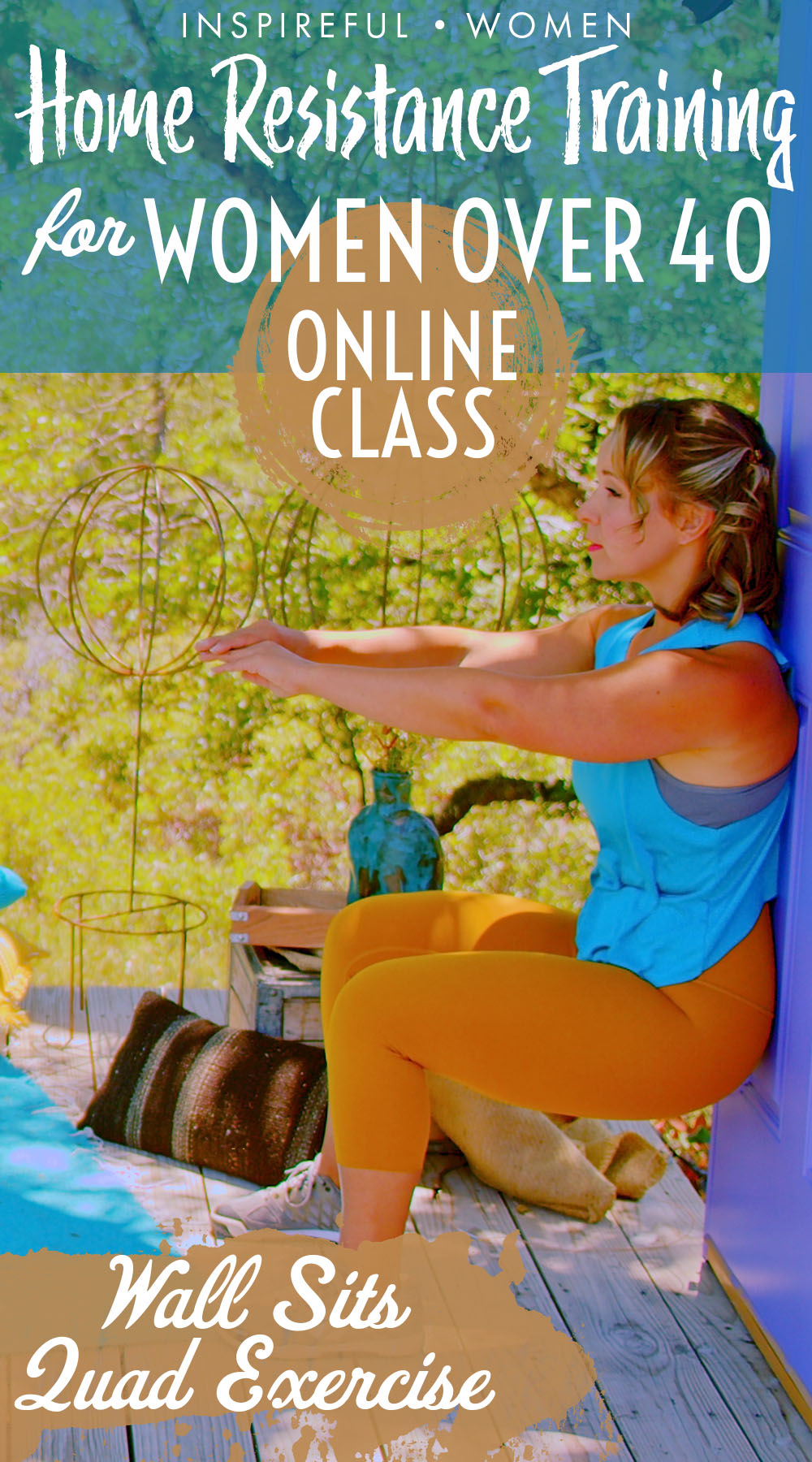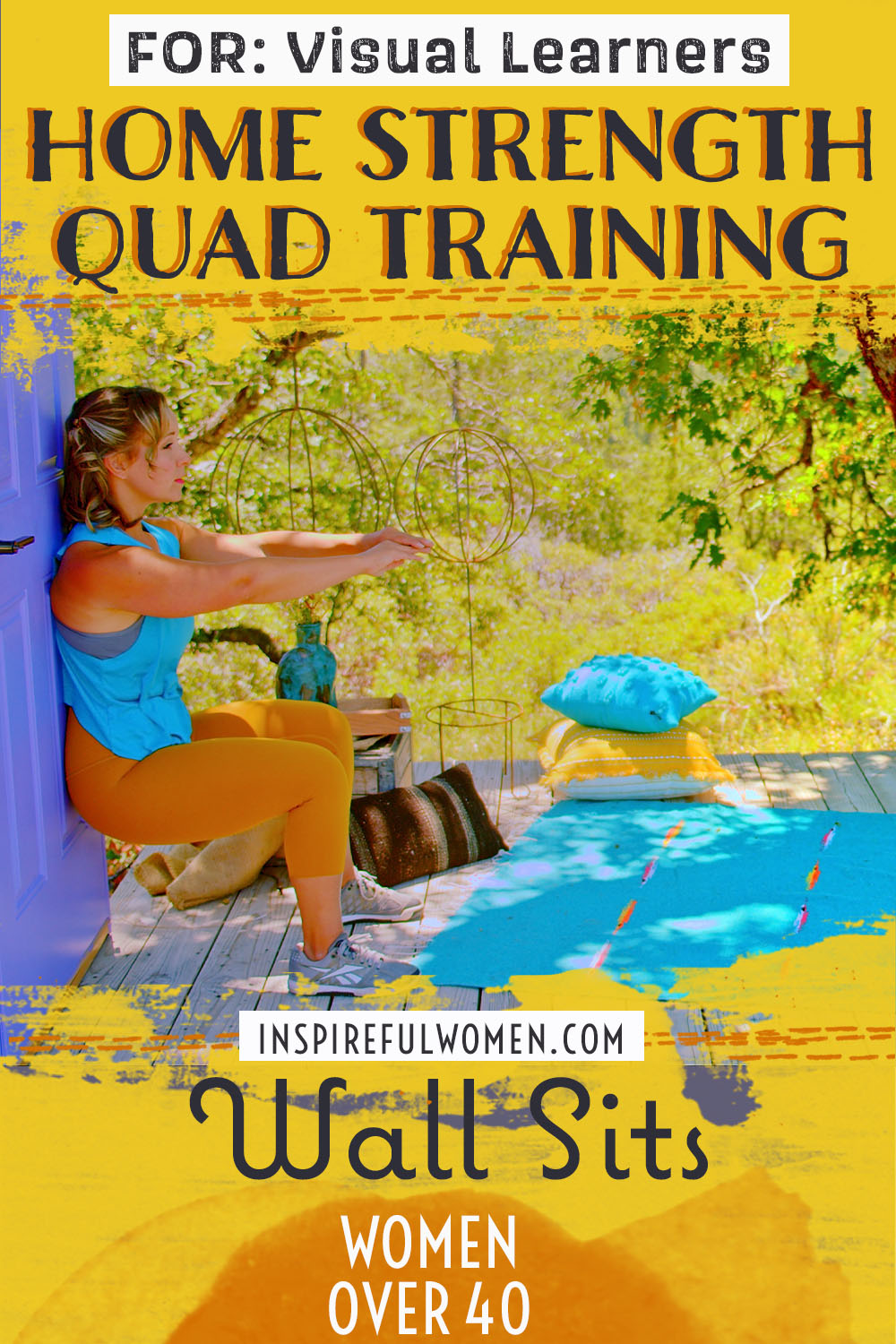Wall Sits - Quad Exercise
How to Do the Modified Squat: Wall Sit - Bodyweight Iso Quad Exercise | In-Depth Guide [VISUAL LEARNERS] Beginner
Proper Form & Common Mistakes | Home Resistance Training
WHAT DO YOU WANT TO SEE?
QUICK DEMO
QUICK DEMO
MUSCLES THIS WORKS
MUSCLES
MAIN MUSCLES WORKED IN the Wall Sit
Quadriceps, gluteus maximus
OTHER MUSCLES WORKED:
- Gastroc/Soleus
- Hamstrings
- Erector Spinae
WHAT WE'RE DOING TODAY
WHAT & WHY
BENEFITS OF TRAINING THE Quadriceps
WHAT
WHAT WE'RE DOING TODAY
Other names for this exercise: Wall Sit, Isometric Wall Squat
ALL WE'RE DOING:
With your back against the wall, you will hold the bottom of a squat.
This modified squat is a bodyweight isometric quadricep exercise and is excellent for beginners and can be easily modified to suit individual fitness levels. One of the great advantages of isometric wall squats is that they can be done anywhere with a sturdy wall. You don't need any fancy equipment or a large space to perform this exercise, making it ideal for home workouts.
Squats can be modified to change the focus of the movement and can help us to improve in an area of our squat that we might be having trouble with.
The modifications all require the use of some sort of equipment, either a ball, wall, box (bench or chair), dumbbell, or band. Choosing which modified squats to do should be based on your ability and your goals. Squats can be slightly modified to accommodate personal limitations in core strength, hip, knee, ankle, or upper back stiffness or muscle tightness, and leg strength. The modifications do not necessarily make the exercise easier, just different. All of the modified versions of the squat focus on strengthening the quadriceps and gluteus maximus muscles, and involve movement at the ankle, knee, and hips.
- If you want to improve the muscular endurance and strength of the quadricep muscles:
- Try Wall Squats
- If you have difficulty:
- Keeping the heels on the floor during the basic squat
- Try: Wall Squat, Ball Squat, or Box Squat.
- Keeping the upper body upright (parallel with the shins/leaning the head and shoulders too far forward)
- Try: Wall Squat, Ball Squat, or Banded squat.
- Keeping your spine in neutral or back pain by squatting
- Try: Ball Squat
- Keeping the heels on the floor during the basic squat
- If you want to work on getting the thighs past parallel to the floor
- Try: Ball Squat or Banded Squat
Keeping the small curve in the low back as you squat down can be hard for a lot of people. It may be helpful to actively pull yourself down at the beginning of the squat. One of the hip flexors (iliopsoas) is attached to the low back (the lumbar part of the spine). Activating these muscles can make it easier to hold the low back in a neutral position.
WHY BOTHER DOING IT?
WHY
WHY DO WE EVEN CARE?
Squats are very functional and fairly simple to do. Our bodies were designed to squat - our ancestors squatted for many of their daily activities - like eating, washing clothes, going to the bathroom, and even talking. If you have the opportunity to watch children play, it is amazing to move in and out of a perfect squat position without effort, and hold the position while they play. However, if you’ve seen this, you’ve also properly thought, “wow I could never get into the position that kids hang out in.” Or we might be thinking just how much discomfort we’d be in if we tried to do that.
ACQUIRE/IMPROVE GOOD FORM WITH MODIFIED SQUATS
If you are not in the habit of squatting it can be challenging to do a squat. Personal limitations can interfere with your ability to squat in the correct form. It may be very useful to start with a modified version to build up the strength and joint mobility to be able to squat.
All of the modified squats do a great job of strengthening the leg muscles. In fact, the wall sit is the best squat to use to recruit more motor units - in other words - to activate the individual muscle fibers - get more muscles involved in the exercise. When you hold your body weight in the wall sit position the muscle fibers fatigue. In order to stay in the position, more fibers are recruited to help out. This is a nice way to improve your mind-body connection and the ability to activate more of the muscle. The wall sit works really well for this because you are holding the position where the muscle is being challenged the most (thighs parallel to the floor).
PUT MOVEMENT BACK WHERE IT BELONGS, AND GET RID OF MOVEMENT WHERE IT DOESN’T BELONG.
With age we tend to lose mobility in the ankles and hips - they get stiffer. When those joints get stiffer, it changes the way that we move. We begin to use our low backs more and our legs less. Over time this leads to backs that move too much and weaker legs. Slowly there can be a trend towards taking smaller steps when walking, not wanting to get down on the floor, using the hands to get up from the floor and using gravity and the arms to help get out of chairs and upstairs. Adding squats to your workout can help prevent this from happening.
EVERYDAY LIFE
EVERYDAY LIFE &
MUSCLE FUNCTION
HOW WE USE OUR Quadriceps & gluteus maximus MUSCLES IN EVERYDAY LIFE
The quadriceps and gluteus maximus muscles work together in activities that involve straightening the knee and the hip at the same time.
1. JUMPING
2. CLIMBING
3. GOING UP AND DOWN STAIRS
4. TRANSITIONING SIT TO STANDING TO SIT
- Sitting in chairs
- In and out of cars
- On and off of the toilet
5. SQUATTING DOWN/GETTING UP
- Getting things out of the bottom shelf
- Getting up and down from the floor
- Gardening
- Picking items or kids up
6. SHOCK ABSORBERS TO PROTECT THE ANKLE, KNEE, AND HIP JOINTS DURING:
- Walking
- Running
- Jumping
7. STABILIZES THE KNEE JOINT DURING ALL ACTIVITY THAT INVOLVES BENDING AND STRAIGHTENING THE KNEE.
- Positions the kneecap in the groove of the femur during knee movement
STARTING POINTERS
Starting Pointers
Main reasons for choosing Wall Squats: Limited hip, knee, or ankle range of motion. Knee, hip, or back pain with a standard squat. New to squats, weak legs, or core.
The wall squat is an isometric squat. The exercise is done by placing your back against the wall and lowering your body down until the thighs are parallel to the floor. This position is held as long as you are able to hold the position or for a set period of time. This version of the squat is not dependent on good thoracic mobility or core strength, your upper back is supported and stabilized by the wall. The exercise is done with the thighs parallel to the floor - this does not require as much hip, knee, or ankle mobility, or calf muscle flexibility. But the position really works the quadriceps and gluteus maximus muscles, this is the position where they will need to produce the greatest amount of force to hold the body up against gravity. If you have a history of knee pain this is a great version to use to strengthen the legs. The knees are kept over the ankles - they do not move forward over the toes. Moving the knees over the toes increases the forces on the knee joint which is frequently a problem for those with a history of knee osteoarthritis.
This is a very easy movement to use for beginners. Only lower down as far as is comfortable but challenging. Over time, as you get stronger you can easily progress the exercise by lowering down a little bit further. You can even vary the depth of the wall squat from the first rep to the last. Make sure that you are keeping your weight evenly distributed on the left and right legs. When you hold a position for a long time, the muscles start to get tired and the brain tries to figure out ways to make it easier. One common strategy is shifting some of the weight off of one leg for a brief period of time, giving it a bit of a rest. Then the weight is shifted onto the rested leg and the other leg gets to take a break - this can be a very subtle shift in weight and not always easy to feel. This is similar to what horses do, they rest one leg at a time, letting the other legs do the work. When it comes to survival, this is a very smart strategy, but it defeats the purpose of this specific exercise, which is to really challenge the muscles.
Holding the position for longer than 60 seconds can be fun if you are competing with someone. But, as far as the benefit of this, it is probably more beneficial to move on to a more advanced exercise, like the single leg wall sit.
HOW TO FEEL WHAT MUSCLE IS WORKING
How to Feel What Muscle is Working
Quadriceps: Sitting upright, place your hand on the front of your thigh (of the test leg). Hook the ankle of the other leg to hold the test leg (the leg that your hand is resting on) in place. Try to straighten the test leg by lifting the foot. You will feel your quadriceps contract.
Gluteus Maximus: Place your hands on your bottom - about where they would be if you put your hands in your back pockets - with the palms on your buttocks. Push down into both feet as if you were pressing yourself up to standing. Try to keep the front of your thighs relaxed so that the muscles under your hands contract. Try activating only one side at a time.
HOW TO DO THE EXERCISE
LOOKS
HOW Wall SitS SHAPE OUR BODY
Firm and shapely thighs and buttocks.
PROPER FORM
PROPER FORM: Wall Sits - Quad Exercise
EQUIPMENT, SETS & REPS
EQUIPMENT
Wall, Barefoot, or Shoes (to prevent slipping).
SUGGESTED STARTING WEIGHT FOR WOMEN:
Body weight
SETS & REPS:
3 reps to fatigue - when form fails - no longer able to hold the position; or 3 sets of 45 seconds.
PACE:
Static hold (isometric)
BODY POSITION
BODY POSITION FOR THE Isometric Squat Hold
Stand about 1.5 to 2 feet from the wall, and place your back on the wall.
FEET: Hip width apart with your toes pointed forward.
LEGS: Slide your back down the wall until your hips and knees are bent to 90 degrees - your thighs parallel to the floor and your shins perpendicular to the floor. * It is common for people to stop short: When your thighs are parallel to the floor, you have a good lap, if you were to set an infant or rolling pin on your lap, it would not roll off. Knees directly over your ankles (not your toes).
BODY STANCE: Neutral spine (includes neck) - low back is not flattened against the wall or arching. Core muscles gently engaged. Sternum lifted, your shoulders back on the wall.
ARMS: Arms by your sides.
HOW TO DO
HOW TO DO Wall SitS Hold
CUE: Keep your sternum lifted.
Hold the position until you cannot - your body slips down the wall, or you flatten your back against the wall.
Push through the bottom of your feet to straighten your hips, knees, and ankles, and slide your back up the wall for a break.
Slide back down the wall to begin the next rep.
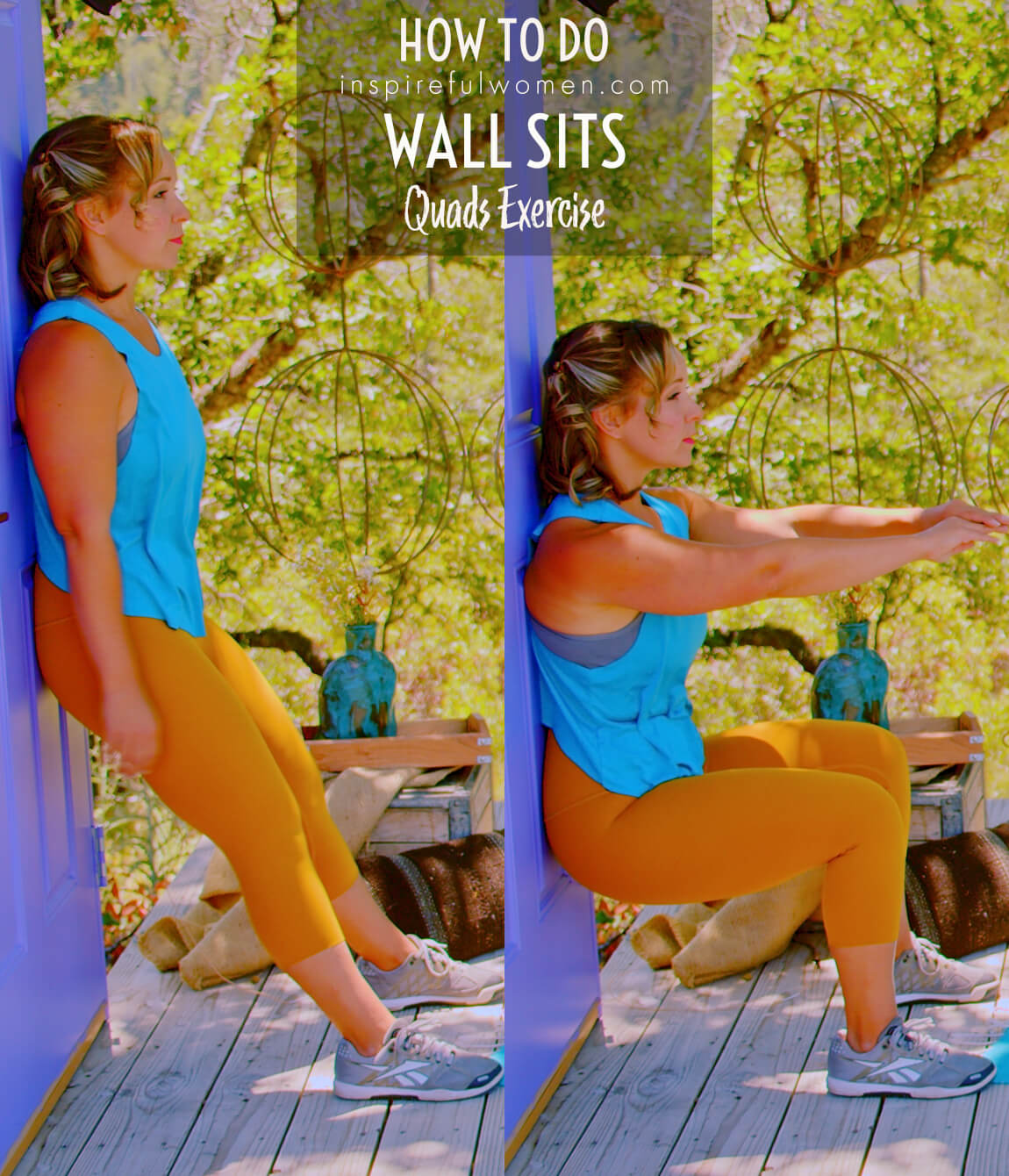
COMMON MISTAKES
COMMON MISTAKES
WHAT TO AVOID WITH THE Wall Sit
KEY TIP:
Guess what? Good news! Many avoids are the same for most movements. Once you learn the basics, there's really only a few extra avoids for each individual movement.
1. Avoid Pressing Back Into Wall
AVOID: Avoid rounding your back/”tucking your tail”.
WHY NOT?
- This is the most common mistake made, in an attempt to go deeper into the squat the tailbone is tucked under.
- This can lead to increased pressure on the spine, and lead to injury or damage over time.
- Tucking the tail, and rounding the low back defeats the purpose of going deeper into the squat.
WHAT TO DO:
- The goal for going deeper is to strengthen the core and increase the range of motion of the hips and ankles.
- Tucking the pelvis under does not increase the hip or ankle range of motion.
- Keep your spine from head to tailbone neutral throughout the movement.
- Keep your shoulders back and sternum lifted.
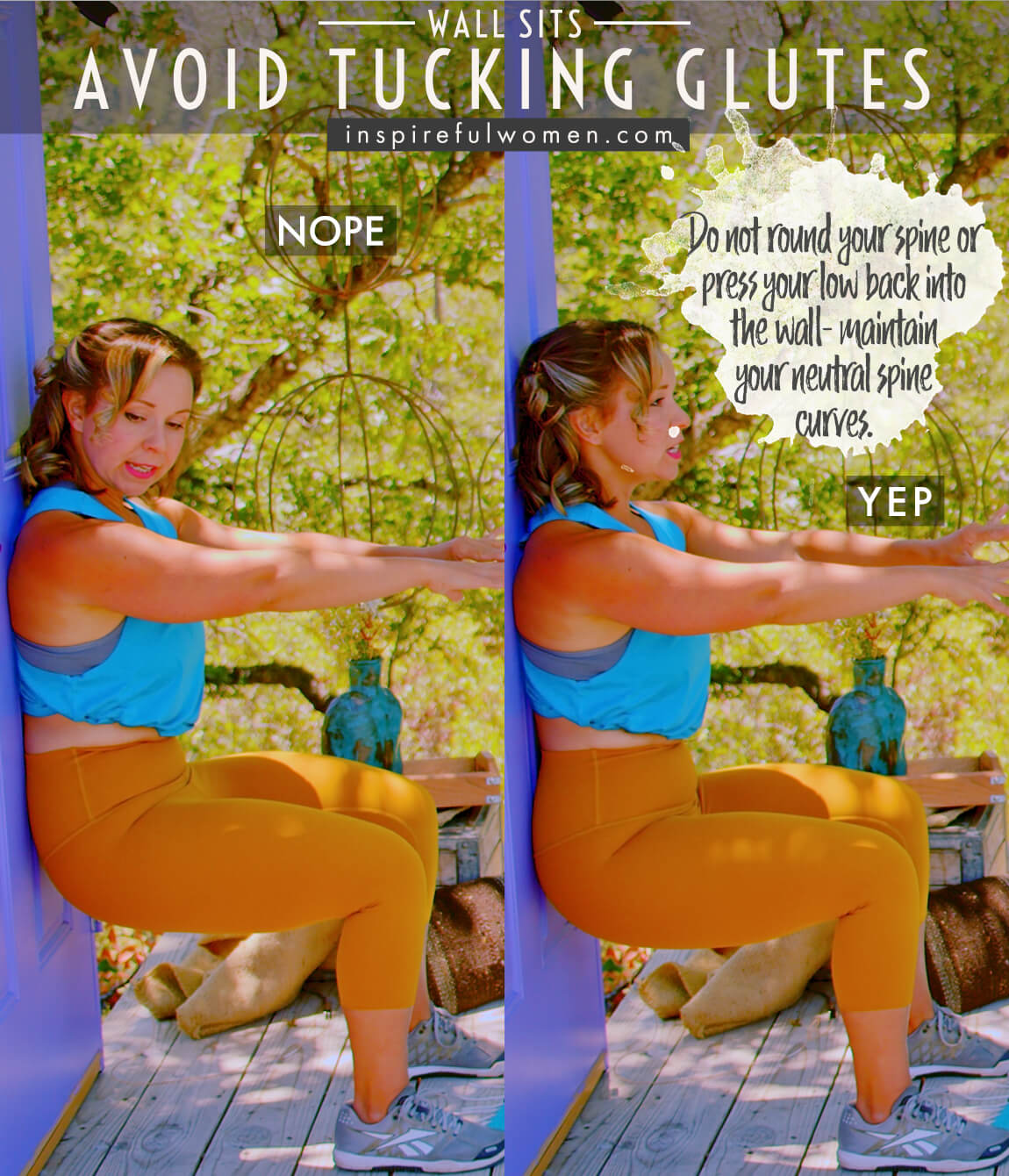
2. Avoid feet too close or far from wall
AVOID: Avoid having your feet too close or far from the wall.
WHAT TO DO:
- The goal is to have your knees right above your ankles in the bottom position - if they are behind or in front of your knees, adjust your foot position.
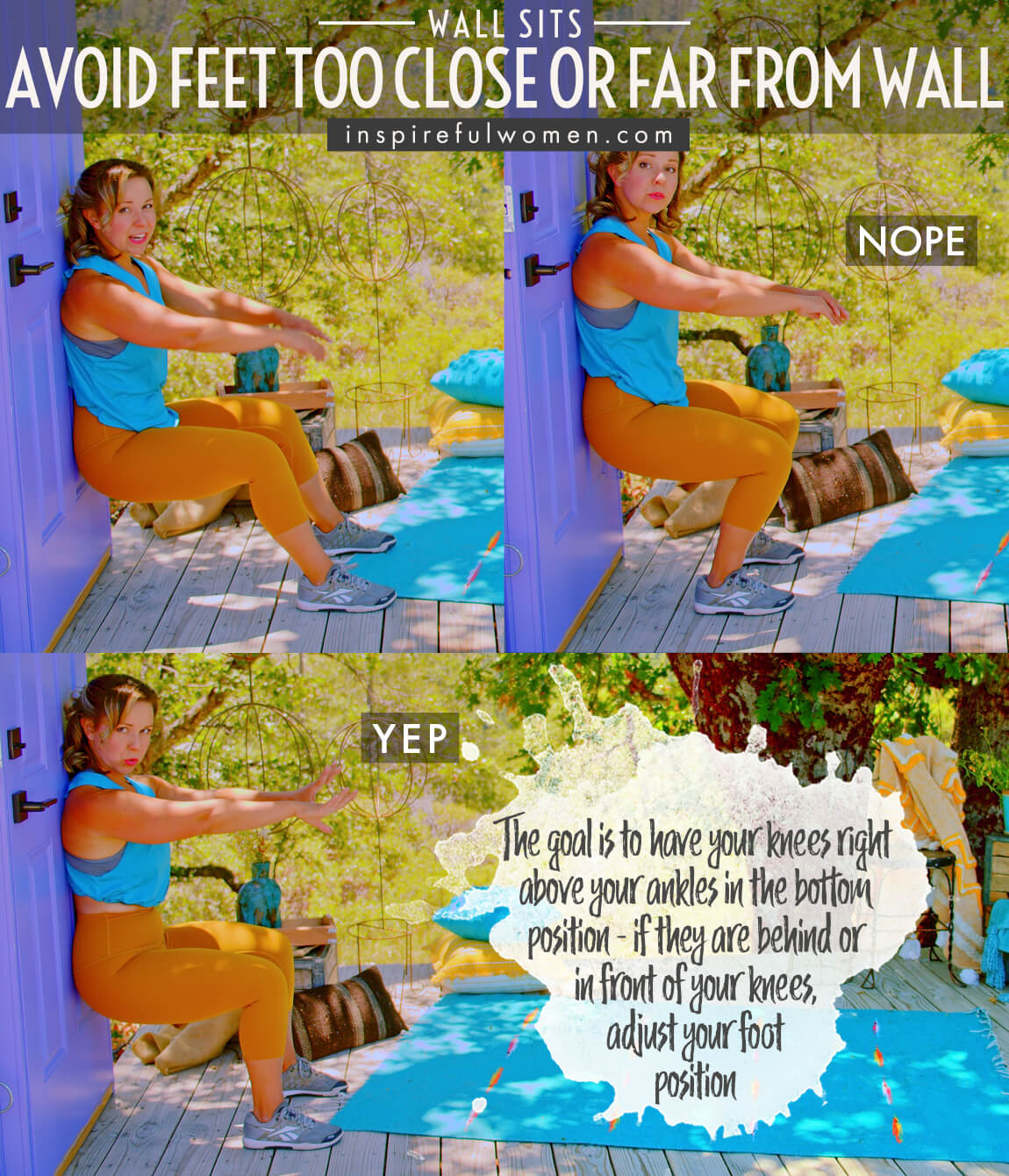
3. Avoid Too Shallow
AVOID: Avoid stopping short.
WHY NOT?
- It is common for people to think their thighs are parallel to the floor when they are not.
- This decreases how hard the quadriceps are working.
WHAT TO DO:
- The center of the side of the knee should line up with the center of the side of the hip - the hips should not be higher than the knees.
- When the thighs are parallel to the floor, you have a good lap, if you were to set an infant or rolling pin on your lap, it would not roll off.
- If possible, use a mirror to check your position.
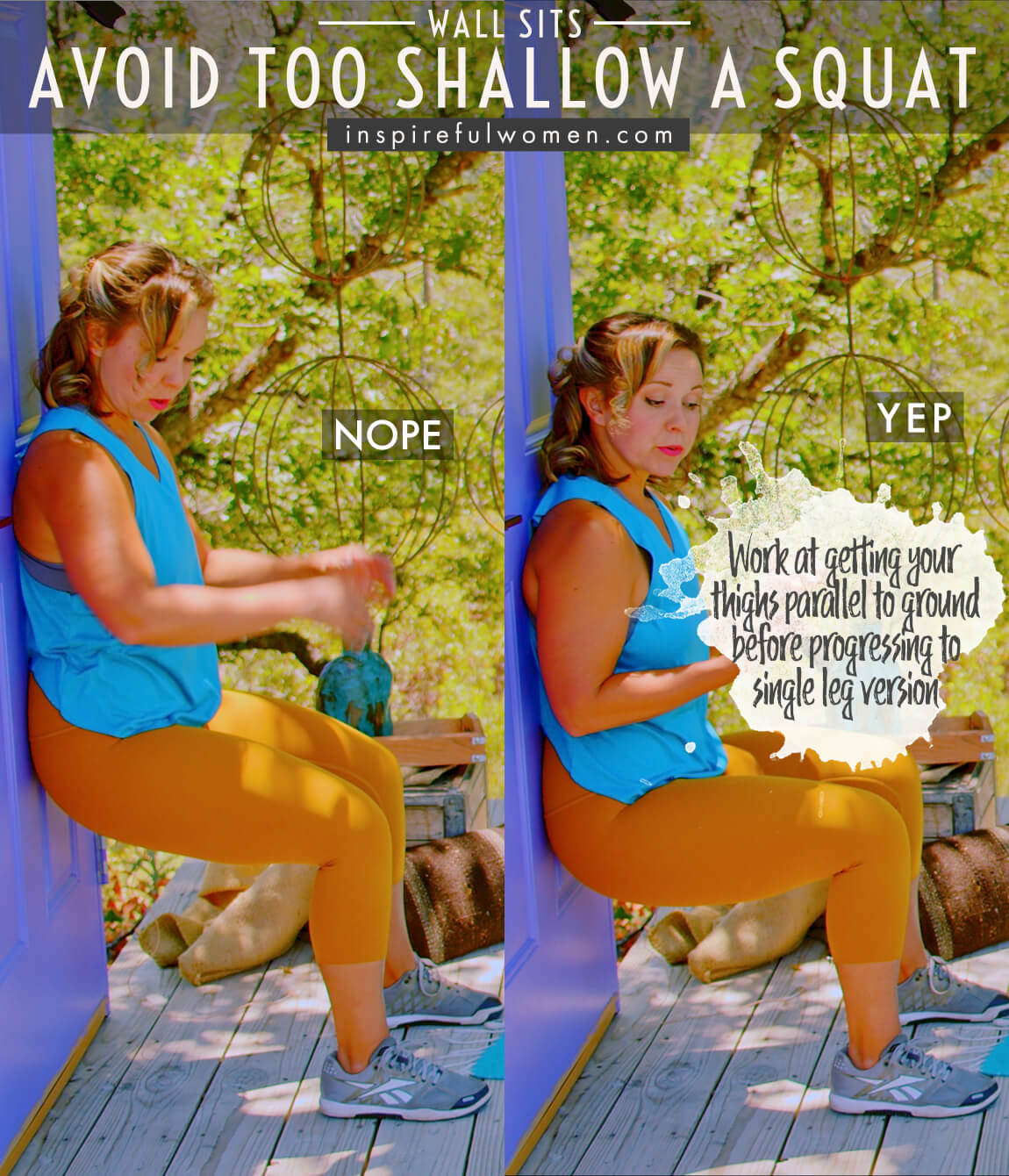
SCIENCY STUFF
ALLLL MUSCLES & WHEN
ALL MUSCLES WORKING & WHEN DURING THE Wall Sit
In the starting position, the muscles of the core (transverse abdominis, obliques, erector spinae, multifidi, rectus abdominis) work to hold the spine in neutral.
The quadriceps and gluteus maximus work eccentrically to lower the body down into the squat position.
When the thighs are parallel to the floor, the quadriceps and gluteus maximus work isometrically to hold the position.
The quadriceps femoris and gluteus maximus contract concentrically to push the body back up to the starting position.
PIN IT FOR LATER!
